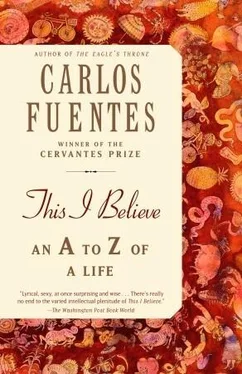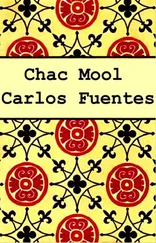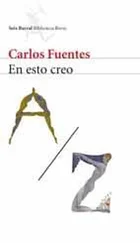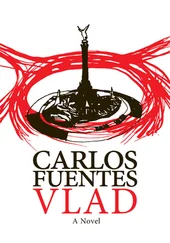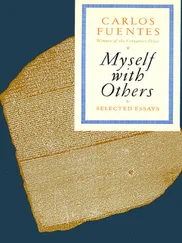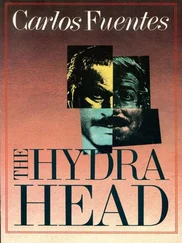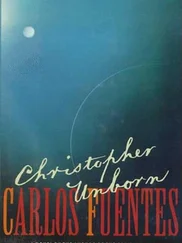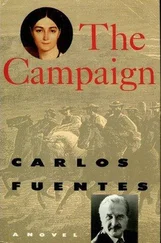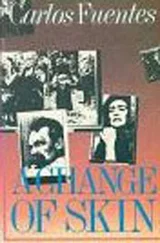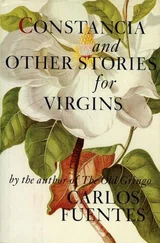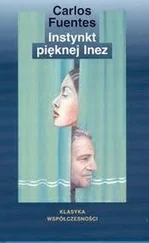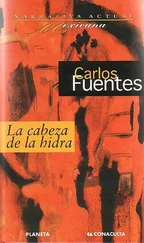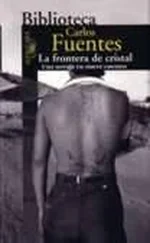In my novel Los años con Laura Díaz ( The Years with Laura Díaz ), these words are spoken by Frida Kahlo, wounded and bleeding in a hospital bed:
You can look at me without modesty, Laura Díaz. . you can say that I look horrible, that you wouldn’t dare show me a mirror, in your eyes today I am not beautiful, on this day and in this place I am not pretty, and I won’t answer you with words, I will ask you instead for some colors and a sheet of paper and I can turn the horror of my wounded body and my spilled blood into my truth and my beauty, because you know, my best pal, my true confidante to the end, knowing ourselves makes us beautiful because it shows us what we desire. When a woman desires, she is always beautiful. .
And when she is desired? The eroticism of plastic representation consists of the illusion that flesh possesses permanence. Like everything in our time, plastic eroticism has been accelerated. For many centuries, a trinket or a painting had to serve as substitute for the beloved. Photography accelerated the illusion of presence. But only the cinematic image is capable of simultaneously delivering both the evocation and its immediacy. This is her as she was then, but this is also her as she is now and forever.
It is her image, yes, but it is also her voice, her movement, her beauty and youth, all everlasting. Death, the great godmother of Eros, is conquered and justified at the same time by our reunion with the beloved who is no longer at our side, breaking the great covenant of passion: always together until death, you and I, inseparable.
But there is also such a thing as the beauty of the horrible, and it is something that has always existed.
The beautiful and terrible warning we hear in the poetry of the Spanish Baroque is that the soul “will abandon the body,” as Francisco de Quevedo writes, “not its love; they will be ashes, but it will still have its feeling; they will be dust, but dust in love.” (Quevedo, “Amor constante más allá de la muerte.”) To foresee the death of the body accentuates rather than deprives it of its presence, yet it still does not free us from introducing the body to the soul and the soul to the body, in life, asking the question: “Are we one? Are we in harmony with one another?”
Does the harmony between body and soul depend on the ideal of beauty that so many different cultures and historical moments have envisioned in their own ways? Rubens liked his women voluptuous, while Modigliani liked them skinny, and Botticelli’s limpid ideal has nothing at all in common with Schiele’s sickly anti-ideal. Nevertheless, our judgment about what is beautiful depends on our individual concept of beauty. Why is one body beautiful and another not? We are attracted to what comes closest to resembling our own ideal. A spectacular fashion model of our time would have been perceived as tubercular to nineteenth-century eyes: Cindy Crawford would be a consumptive in Delacroix’s harem.
Not long ago, the Chilean novelist Marcela Serrano described the modern woman as having the capacity to change skin like a snake, freeing herself from the inevitability and servitude of more obsolete times. Through this vision, the symbol of renewed skin brings me back to the question of the dissociation or harmony between body and soul. Why is one body beautiful and another not? Why do we speak of beautiful souls and ugly bodies, or comely bodies and abhorrent souls? Disharmony exists, there is no doubt about it. But what also exists is the form that both harmony and disharmony can and should assume. What did the decapitated, dehumanized Mother Goddess Coatlicue represent to the Aztecs? Perhaps the notion that a divinity demands inhumanity. But aren’t the lovely actresses of the big screen—“the women who saunter down Fifth Avenue, so close to my eyes, so far from my life,” as the Mexican poet Tablada wrote — as distant from us as Coatlicue?
The artist knows that there is no such thing as beauty without form, but the artist also knows that the form or shape assumed by beauty will depend upon the particular ideal of beauty prevalent in the social context from which the art emerges. The artist transcends the dilemma — partially, momentarily — by adding a factor: that beauty cannot exist without the gaze. It is natural for the artist to favor the gaze. A great artist, however, invites us not only to gaze but to engage the imagination. The feminine form as a form of beauty is also an object of olfactory sensitivity (Don Giovanni’s odor di femmina ), of aural sensuality (Goya, Buñuel, and Beethoven, as deaf men, have to imagine the voices of the body), and, finally, imaginative sensuality. (The jealous Proust and Catullus, Romeo and Quixote separated from Juliet and Dulcinea, Samsa transformed into an insect, imagine another body, either lost or desired.)
The art of visual beauty would be far poorer if it were to exclude the extension of the gaze to all that is tactile, aural, olfactory, gostoso as the Portuguese would say. Because we, as humans, seek an infinite pleasure that can satisfy all our senses. Nor are we content with that alone. We always want something more, something that we may not even be able to articulate, something our imagination and senses seek, demand, imagine, even if they cannot conceive of it in a concrete manner. “Oh, intelligence, solitude in flames, that conceives all without creating.” This very deep intuition of José Gorostiza, in what is the greatest Mexican poem of the twentieth century (“Muerte sin fin,” or “Endless Death,” 1938) puts the great dilemma of our residence on earth into words: to desire a satisfaction that is infinite, but temporal at the same time, a here and a now.
Beauty does not surrender her body to tell us to be content with what the world gives us, to limit our desires and ask for a kind of perfunctory conformity. No: rather, beauty surrenders her body to give us the gift of a body in the present, a body here and now that nevertheless does not sacrifice any of its possibilities, none of its maybes and none of its nevers. For the person who knows how to see, the body’s ideal and its negation are brought together in art: the harmony of the body with the soul as well as their possible disharmony; the presence of the body as well as its inevitable absence; its pleasure but also its pain.
In 1950, while studying at the University of Geneva, I attended a film club in the city. It was there that I first saw Un Chien andalou by Luis Buñuel, presented by a gentleman who spoke to us of a reprobate filmmaker who had died in the Spanish Civil War. That was when I raised my hand to correct him, for Buñuel was alive and living in Mexico — in fact he had just finished Los olvidados, which was to be premiered that spring at Cannes.
Los olvidados arrived at the Cannes Film Festival despite the objections raised by the puritanical, chauvinistic bureaucrats in the Mexican government who considered the film to be “denigrating to Mexico.” Octavio Paz, who at the time was the secretary of the Mexican embassy in Paris, defied the official denunciation of the picture and personally distributed a lucid essay on Buñuel and his great film at the entrance to the Cannes Festival Palace. Buñuel never forgot this act of courage and generosity.
I met Buñuel while he was filming Nazarín in Cuautla. The cast included Rita Macedo, my first wife, as well as Marga López and the extraordinary Francisco Rabal, whose air of mystical remove and tender mercy magnificently sustained the fury and ultimate pain of the character of Galdós. The essence of Buñuel’s secret religiosity is patent in Nazarín. His famous quote, “I’m an atheist, thank God,” may be an amusing boutade, but it was also a necessary disguise for a creator who personified, as no one else could, the unsettling declaration of Pascal’s Christ: “Thou wouldst not seek me if thou hadst not found me.” In this light, Buñuel was part of one of the most compelling, if uncategorizable, intellectual tendencies of the twentieth century: that of religious temperament without religious faith. Camus, Mauriac, and Graham Greene, to varying degrees of intensity, bear witness to this inclination, as do filmmakers like Ingmar Bergman, a Protestant to his own chagrin, and Luis Buñuel, an atheist but for the grace of God.
Читать дальше
